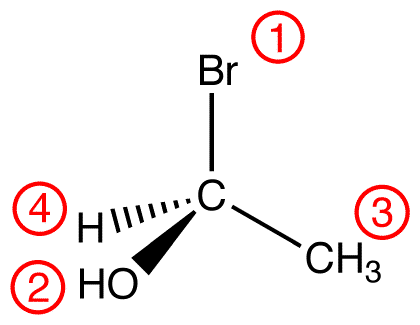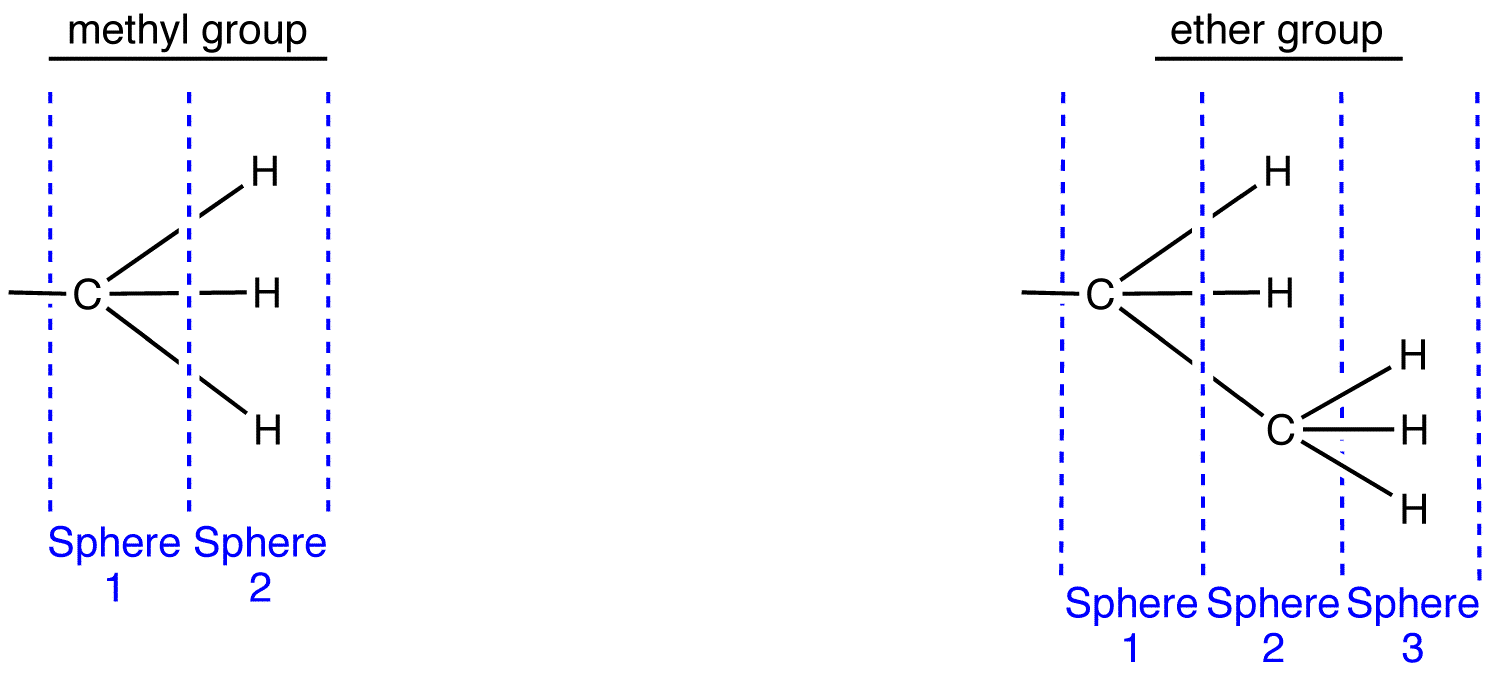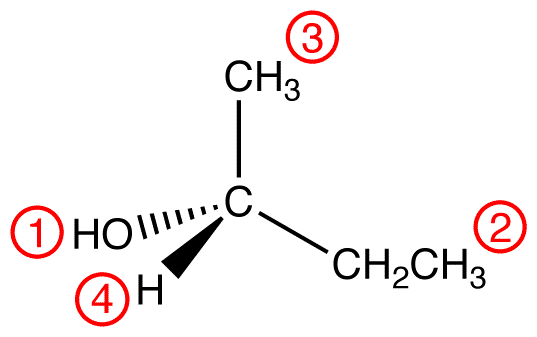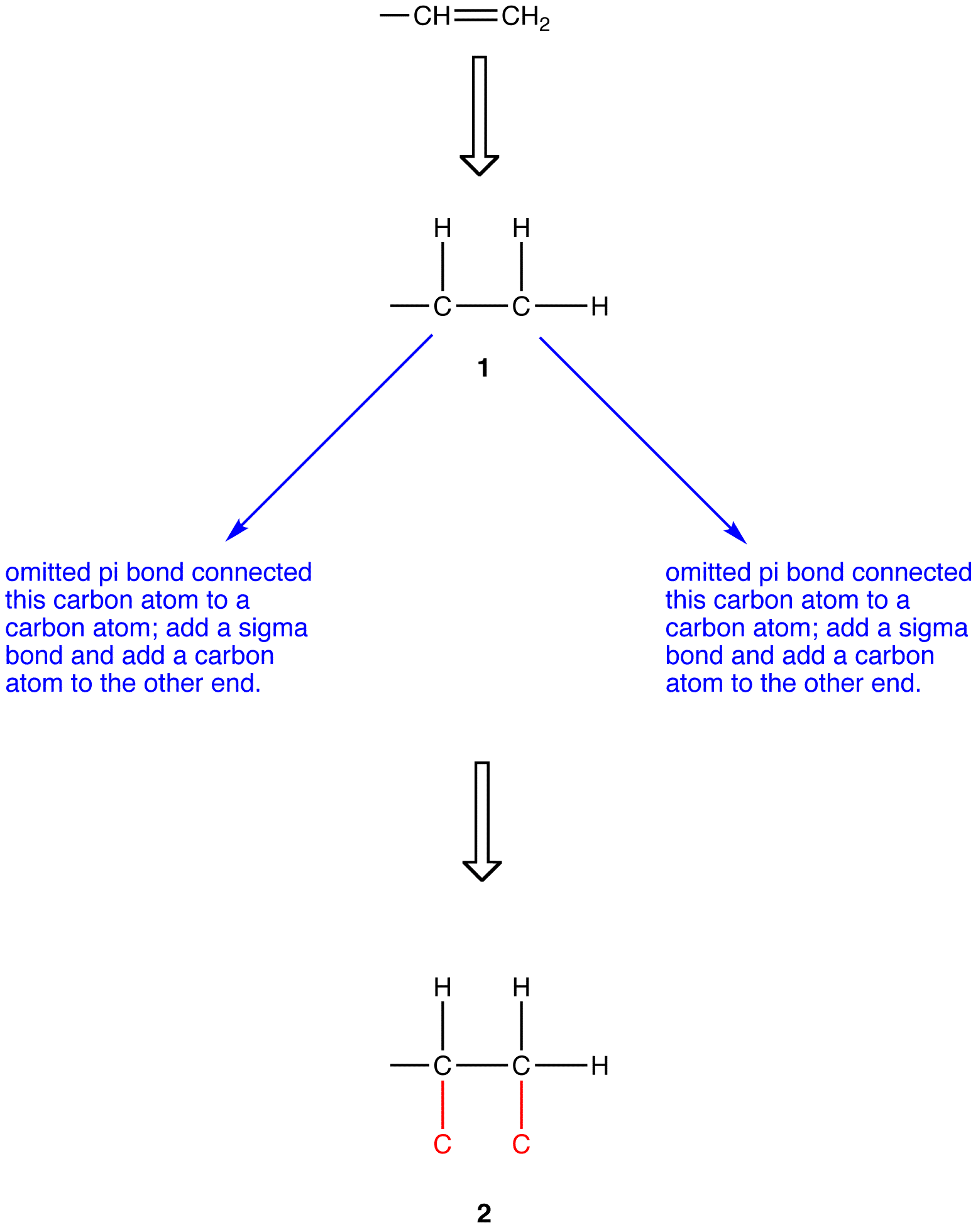R,S Convention
- Page ID
- 39244

To determine whether the absolute configuration at a chiral center is R or S, a three-step procedure is used.
Step 1
Assign priority numbers to the four ligands on the chiral center, using the following rules.
|
Rule 1:
atomic number: Br > O > C > H
|
|
Rule 2:
atomic number: O > C > H, D
|
|
Rule 3:
atomic number: O > C > H
To apply outward exploration to methyl and ethyl groups, draw them fully expanded and divide them into “spheres” as follows.
Compare the atoms in each sphere of the methyl group with those in the corresponding sphere in the ethyl group, starting with sphere 1.
Sphere 1 of the methyl group is identical to that of the ethyl group; a decision can not be made by comparing them.
Sphere 2 of the methyl group is different from that of the ethyl group; a decision must be made by comparing them. In Sphere 2 of the methyl group, the three atoms are all hydrogen atoms. Choose one of them randomly for comparison. In Sphere 2 of the ethyl group, there are two types of atoms: hydrogen and carbon. Since the atomic number of carbon is higher than that of hydrogen, carbon has priority over hydrogen; choose the carbon atom for comparison.
Compare the chosen atoms in the two ligands. atomic number: C > H
Outward exploration is similar to alphabetizing a series of words. The basic rule of alphabetizing is a decision must be made at the first letter of difference (eg: Johns and Jones); that of outward exploration is a decision must be made at the first sphere of difference. eg. 2:
Before applying outward exploration to a ligand containing one ore more pi bonds, such as the vinyl group (—CH=CH2), each pi bond must be replaced with two sigma bonds. To replace the pi bond in the vinyl group with sigma bonds, first draw is fully expanded omitting the pi bond (1).
Apply outward exploration to the ethyl group and the hypothetical ligand 2.
Since the chosen atoms in the two ligands are identical, namely, carbon atoms, a decision can not be made by comparing them. However, since the Sphere 2 of ethyl group and that of 2 are not identical, a decision must be made by comparing them. To do so, follow the procedure, ignoring the carbon atoms already compared.
atomic number: C > H
|
Step 2
View the molecule from the side opposite to that of the lowest-priority ligand. eg:

In this molecule, the lowest-priority ligand, hydrogen, is pointing into the plane of the paper, away from the viewer. Therefore, the viewer is looking at the molecule from the side opposite to that of hydrogen.
If the viewer is not looking at the molecule from the vantage point, rotate and redraw the molecule so that the viewer is.eg:

Step 3
Trace the three highest-priority ligands starting at the highest-priority ligand (① → ② → ③):

eg:

see also Fisher projection, D,L convention


















